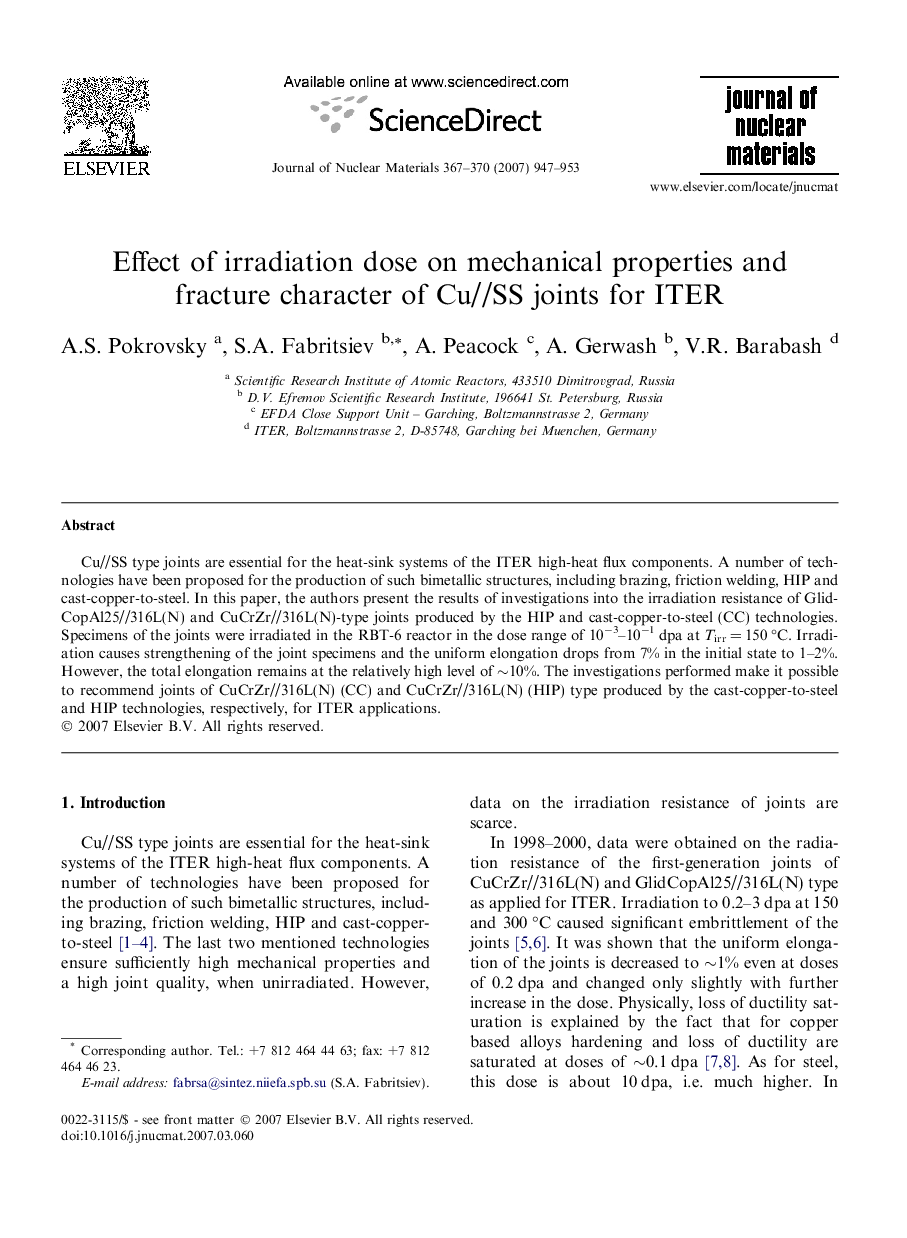| Article ID | Journal | Published Year | Pages | File Type |
|---|---|---|---|---|
| 1569269 | Journal of Nuclear Materials | 2007 | 7 Pages |
Cu//SS type joints are essential for the heat-sink systems of the ITER high-heat flux components. A number of technologies have been proposed for the production of such bimetallic structures, including brazing, friction welding, HIP and cast-copper-to-steel. In this paper, the authors present the results of investigations into the irradiation resistance of GlidCopAl25//316L(N) and CuCrZr//316L(N)-type joints produced by the HIP and cast-copper-to-steel (CC) technologies. Specimens of the joints were irradiated in the RBT-6 reactor in the dose range of 10−3–10−1 dpa at Tirr = 150 °C. Irradiation causes strengthening of the joint specimens and the uniform elongation drops from 7% in the initial state to 1–2%. However, the total elongation remains at the relatively high level of ∼10%. The investigations performed make it possible to recommend joints of CuCrZr//316L(N) (CC) and CuCrZr//316L(N) (HIP) type produced by the cast-copper-to-steel and HIP technologies, respectively, for ITER applications.
